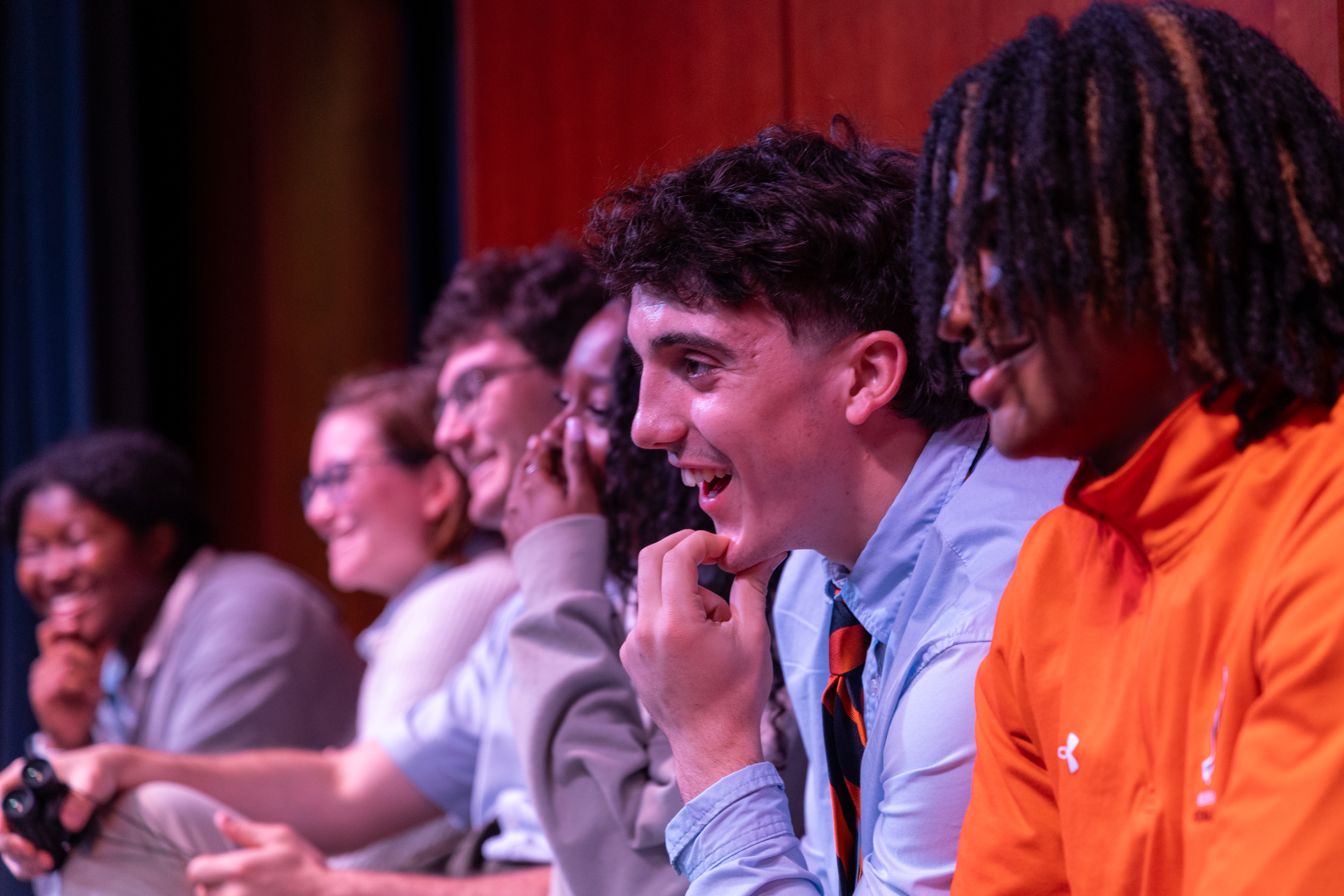
6 minute read
The Art of 'Yes, And' —Inside McDonogh's Improv Class
On the Klein Lyceum stage, there are no elaborate sets, no costumes, and no props. In fact, the 10 students in Improv I and II have no script, no predetermined roles, and not a single scene has been rehearsed. Yet, their bi-monthly performances keep audiences of their peers on the edge of their seats, laughing and wanting more.
ACCEPTING AND EXPANDING
“Improvisation is entirely made up on the spot; that’s the nature of it. The thrill for the audience is knowing that everything is being created instantly based on their suggestions,” says Kevin Costa Ph.D., who has taught the class on and off or some 20 years. “Each ‘yes,’ builds upon another. The excitement comes from pushing into the unknown.”
Mason Bainbridge ’25, who is in his third year of learning the craft, explains that he and the others in the ensemble practice or train during their class periods to build the skills they will need for a showcase. “Improv is meant to be done on the spot, but there are essential guidelines we follow,” he says. “A good scene needs three elements: character, conflict, and location.”
Costa emphasizes the fundamental rule, “The first and critical ingredient for the actors is to accept offers that are made on the stage. The ‘yes, and’ disposition becomes a rich bank of possibility. People enjoy watching it to see how deep they can go with the scene.”
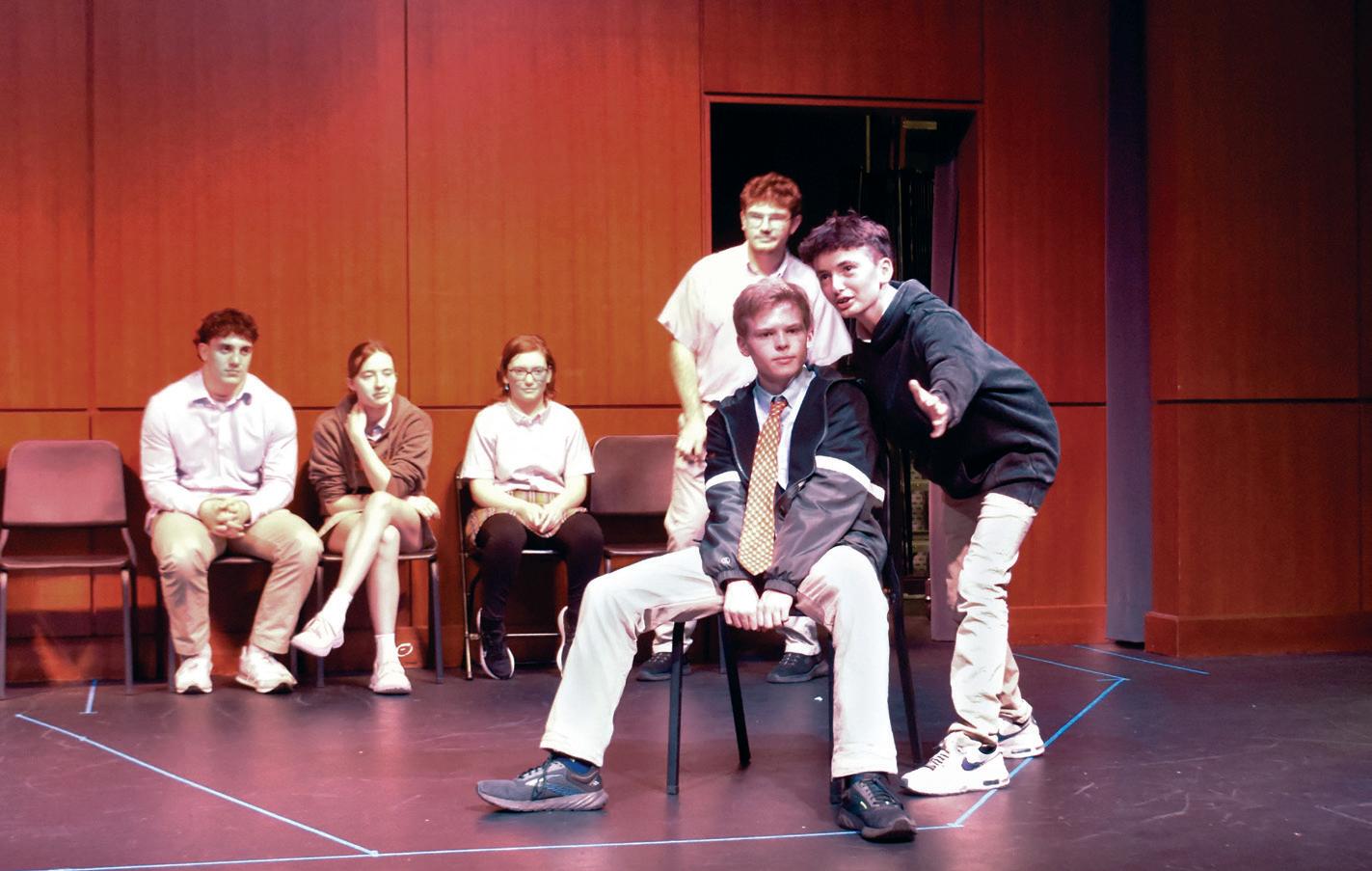
IT’S ABOUT BELONGING
Just days into the school year, the fall 2024 improv class—a diverse mix of students, including actors and athletes, introverts and extroverts, beginners, and seasoned performers in their third round—put on their first showcase for a live audience.
While they appeared confident, Leo Marks ’25 reveals, “We’re all high schoolers, we’re all shy. It’s nervewracking to perform, to accept the possibility of failure in front of people.”
As the semester progressed, even the most reserved first-timers shed their anxiety, becoming as eager to perform as their more experienced peers. Costa describes the group as fundamentally accepting, “Everybody meets each other where they are. It’s about belonging. We are totally safe together.”
THE GAMES THEY PLAY
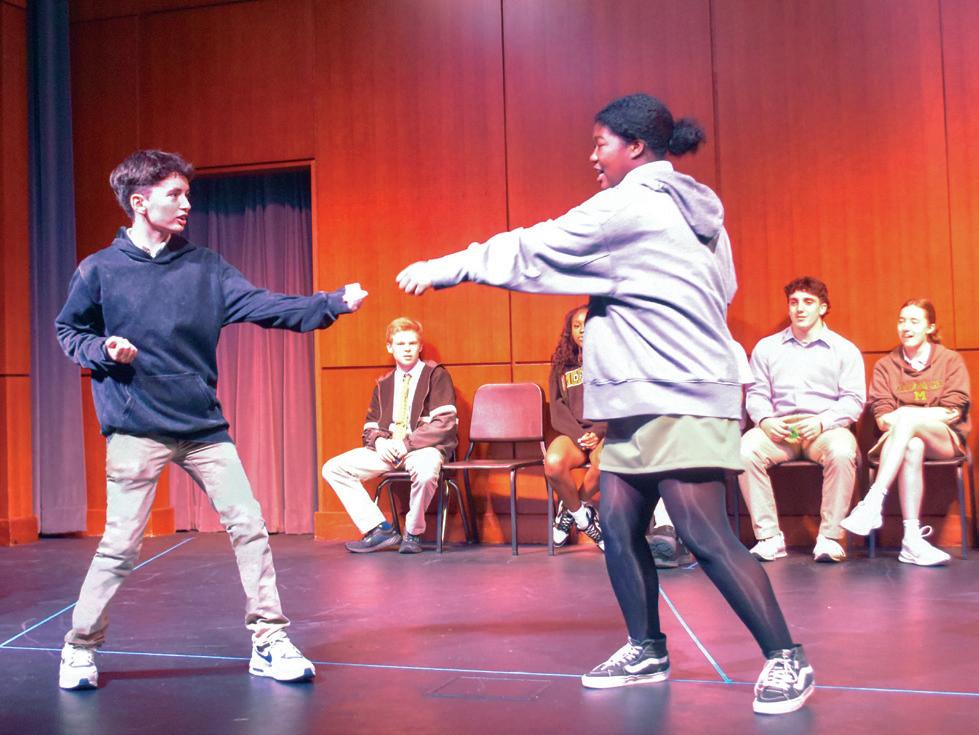
During a fast-paced October showcase, the ensemble demonstrated their skills through various improvisational games. Each member was willing to participate despite the uncertainty of how it would unfold. In one challenge, two performers, working from a point of inspiration suggested by the audience, crafted a story one word at a time, each word beginning with the next letter of the alphabet—an exercise demanding intense concentration and creativity.
Among the group’s favorite games is “dubbing,” where two performers act silently on stage while two others provide their voices. “The difficulty is that all four people in the scene have to be perfectly synchronized,” Krish Pandey ’25 explains. Costa elaborates, “It’s a rare opportunity for deliberate concentration. A skilled improviser focuses on making their partner look good, not seeking selfish laughs. The combination of intention and concentration required is remarkable. It calls on all of these muscles at the same time.“
Another important element of dubbing is physicality. Mason explains, “Because half the people in the scene can’t say anything, all their acting is done through facial expressions and their arm and leg movements.” He continues, “That skill is great to have when you’re acting and also when you’re presenting or in any social situation.”
LEARNING LIFE SKILLS
On occasion, after illustrating their craft at an improv showcase, the ensemble offers audience members the opportunity to try it for themselves. Without any training, they quickly learn that it is not as easy as it looks. “They see us do it and think, ‘Oh, this is easy,’ but when they get up there, it’s way harder. They don’t have the same training,” Mason says.
The ensemble believes everyone could benefit from improv training. Their reasons for joining vary—from seeking confidence to pursuing an interest in acting to following a teacher’s encouragement. Whatever their motivation, they all agree that the skills they have gained will serve them far beyond the stage.
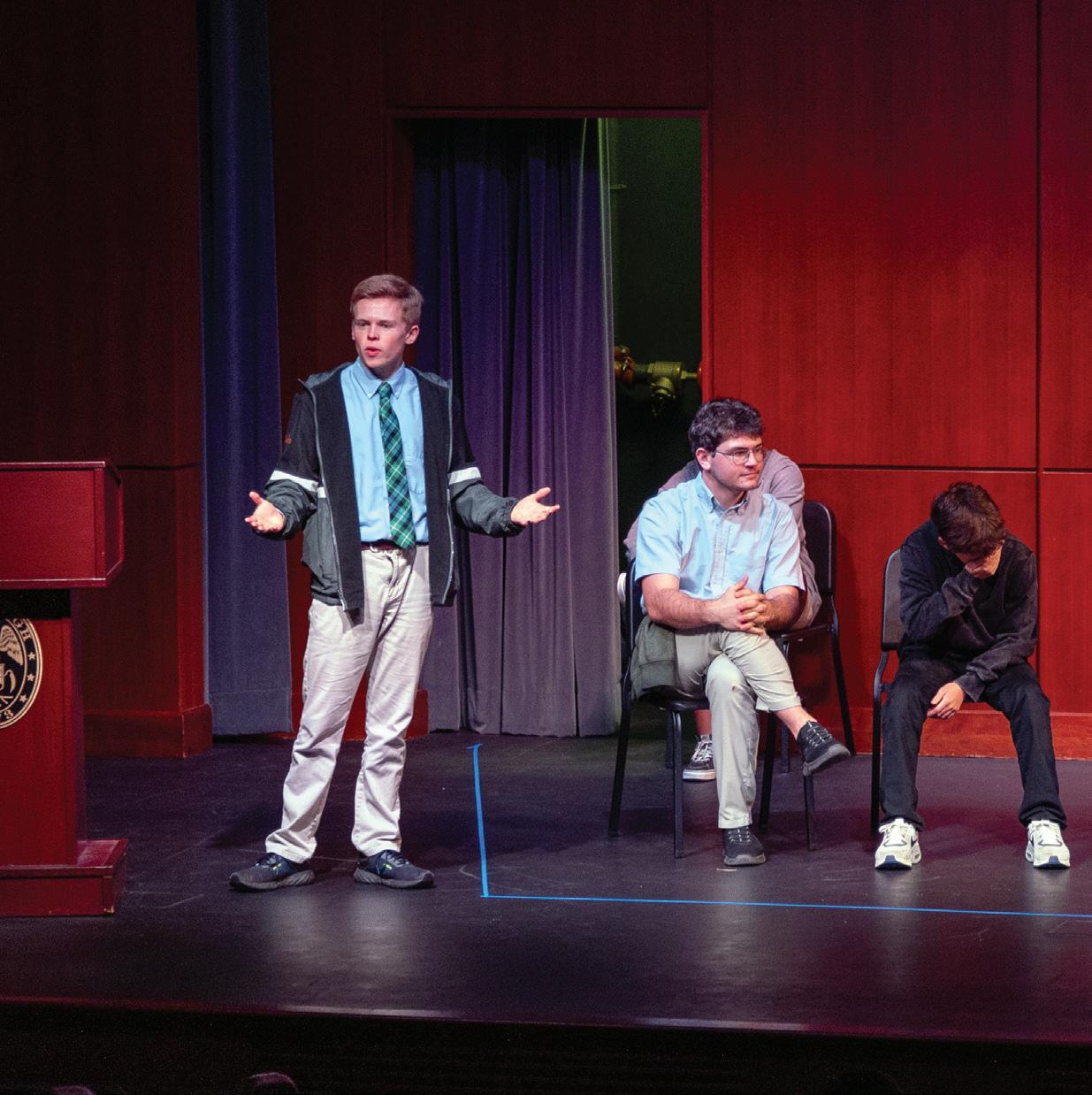
“This is one of the most challenging and rewarding classes you can take—this is people work,” says Gennie Matanoski ’26. “You develop lifelong skills needed for success in the real world: compromising, accepting other people’s ideas and sometimes letting go of your own, adapting quickly, and doing things on the fly. These skills set us apart. Everyone in this class has a leg up on the world.”
The benefits manifest in unexpected ways. Krish, who audited the course last year for fun, notes, “Presentations in history and French come more naturally now. Speaking in front of the Upper School or the boarding community feels more genuine without a script.”
Mason plans to continue acting in college and enjoys the “small-town celebrity” status that comes with performing. He says, “It also opens up other opportunities because once you’ve demonstrated that you can talk in front of a live audience and handle a crowd, you’re asked to do other things. For example, I’ve run some other school events, assemblies, and a pep rally.”
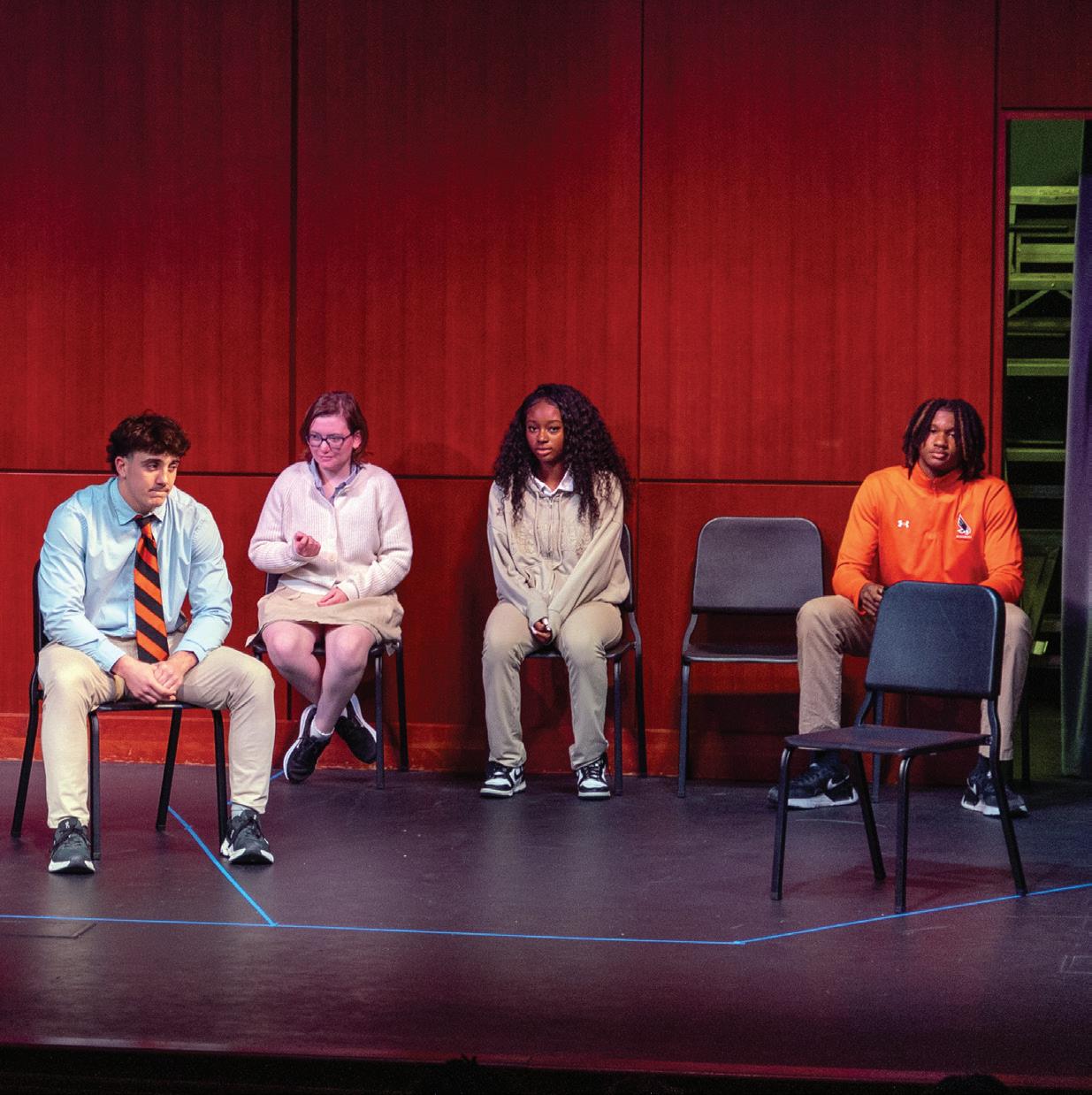
BEYOND THE STAGE
The impact of improv reaches far beyond performance skills. The ensemble all agree that improv has helped build their confidence. J.J. DiMonte ’26, primarily an athlete, discovered new talents: “I’ve always been a wrestler, but improv showed me I might have other abilities.” Conversely, self-proclaimed “theater-person” Riva Wagner ’27 shares, “I’m actually going to try out for a sport for the first time.”
Jackson Drummond ’25, an actor who prefers a scripted performance, says, “This class teaches being able to communicate, perform, talk without a script, and just think on the fly. It’s really helpful.” Andrew Moore ’27 adds, “Not only has improv given me more confidence, but we’ve also all become friends who have become comfortable with each other through anything. It’s amazing.”
Costa points out a crucial lesson his students might not yet recognize: “We build resilience through failure because many improv scenes don’t work. But you just get back up and try again.”
He concludes with a powerful metaphor, “You want a bouillabaisse of flavors, attitudes, and perspectives—it not only makes for good scenes but for a good life. You learn to embrace differences and work with people who see things differently than you. No great problem is ever solved by a single mind.”
The class reinforces a fundamental truth: everyone has creative riches inside them. When the ensemble comes together, grade levels disappear and something magical happens—a unified group ready to say ‘yes’ to whatever comes their way.
—Meredith Bower






